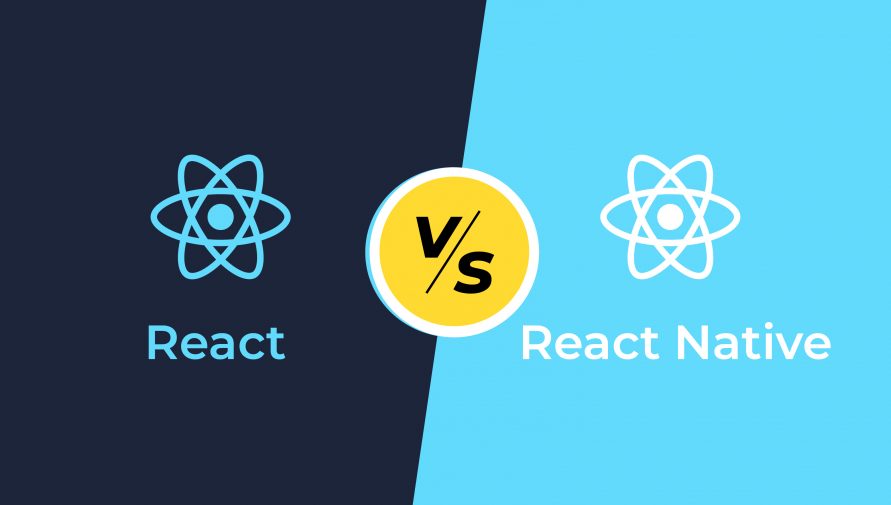In the realm of modern web and mobile app development, React and React Native stand out as two powerful tools that have revolutionized the way developers build user interfaces. Both are products of Facebook's engineering efforts, offering efficient solutions for crafting interactive and visually appealing applications. However, despite their similar names and shared origins, React and React Native serve distinct purposes and cater to different development needs. In this blog post, we'll delve into the key differences between React and React Native, exploring their strengths, use cases, and when to choose one over the other.
React: Powering Web Interfaces
React, also known as React.js or ReactJS, is a JavaScript library for building user interfaces, primarily intended for web development. Developed by Facebook in 2013, React has gained immense popularity among developers due to its declarative syntax, component-based architecture, and efficient rendering capabilities.
Key Features of React:
Component-Based Architecture: React applications are built using reusable components, encapsulating the UI elements and their logic. This modular approach enhances code maintainability and promotes reusability across the application.
Virtual DOM: React utilizes a virtual representation of the DOM, allowing it to efficiently update only the necessary components when the state of the application changes. This minimizes DOM manipulation, resulting in faster rendering and improved performance.
JSX (JavaScript XML): JSX is a syntax extension for JavaScript that enables developers to write HTML-like code within JavaScript files. This seamless integration of markup and logic enhances code readability and simplifies the development process.
Unidirectional Data Flow: React follows a unidirectional data flow, where data flows downwards from parent components to child components. This ensures predictable state management and simplifies debugging by isolating the source of truth.
React Native: Building Cross-Platform Mobile Apps
React Native, introduced by Facebook in 2015, is an open-source framework for building native mobile applications using JavaScript and React. Unlike traditional hybrid frameworks, React Native allows developers to create truly native UI components, offering a superior user experience across iOS, Android, and other platforms.
Key Features of React Native:
Cross-Platform Compatibility: React Native enables developers to write code once and deploy it across multiple platforms, eliminating the need for separate codebases for iOS and Android. This streamlines development efforts and reduces time-to-market for mobile applications.
Native Performance: By leveraging platform-specific UI components, React Native delivers native-like performance and user experience. Unlike web-based hybrid frameworks, React Native apps are compiled to native code, ensuring optimal performance and responsiveness.
Hot Reloading: React Native includes built-in support for hot reloading, allowing developers to instantly see the changes made to the code without restarting the application. This feature accelerates the development cycle and enhances productivity during iterative development.
Access to Native APIs: React Native provides access to a wide range of native APIs and modules, allowing developers to integrate device-specific features seamlessly. Whether it's accessing the camera, geolocation, or push notifications, React Native offers extensive support for native functionality.
Choosing Between React and React Native
While React and React Native share the same underlying principles and syntax, they serve distinct purposes and target different platforms. Here's a brief guide to help you choose between React and React Native for your next project:
Web Development: If you're building a web application or website, React is the go-to choice. Its robust ecosystem, vast community support, and efficient rendering make it ideal for creating dynamic user interfaces on the web.
Mobile App Development: For mobile app development, particularly when targeting multiple platforms, React Native is the preferred option. Its ability to create native mobile experiences using JavaScript simplifies cross-platform development and enables code reuse.
Hybrid Solutions: In some cases, a hybrid approach combining React for web development and React Native for mobile development may be appropriate. This approach allows for code sharing between web and mobile platforms while still leveraging native capabilities on mobile devices.
In conclusion, both React and React Native are powerful tools that have transformed the landscape of modern application development. Whether you're building web interfaces or native mobile apps, understanding the differences between React and React Native is crucial for selecting the right technology stack for your project. By leveraging their strengths and capabilities, developers can create high-quality, performant applications that meet the demands of today's users.
Happy coding! 🚀
